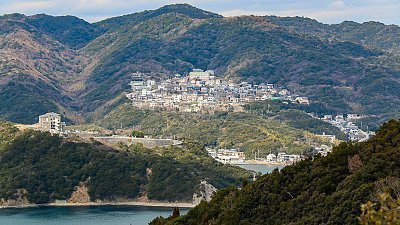Notsuke Peninsula

Winter in Hokkaido is in a class of its own. The vast snow covered landscape, icy cold temperatures, drift ice and frozen water bodies, these are scenes that are uniquely Hokkaido. In my quest for unique and remote landscapes, I visited the far flung Notsuke Peninsula in eastern Hokkaido in mid January 2020. Located between the Shiretoko Peninsula in the north and the Nemuro Peninsula in the south, the tiny peninsula remains relatively unknown even to the average Japanese person and is very much off the regular tourist radar.
The Notsuke Peninsula is an approximately 28 kilometer long sand bar, which is said to have been formed thousands of years ago by sand deposits from the Shiretoko Peninsula in the north. The long and thin peninsula offers an abundance of wildlife and pristine nature all year around. Eagles, foxes, deer, seals, cranes and scores of migratory birds, just to name a few, can be seen in the Notsuke Peninsula. The peninsula is also the habitat of some unique wild flowers, and remnants of a once-thriving forest filled with pine and fir trees that grew in the bay can be seen.
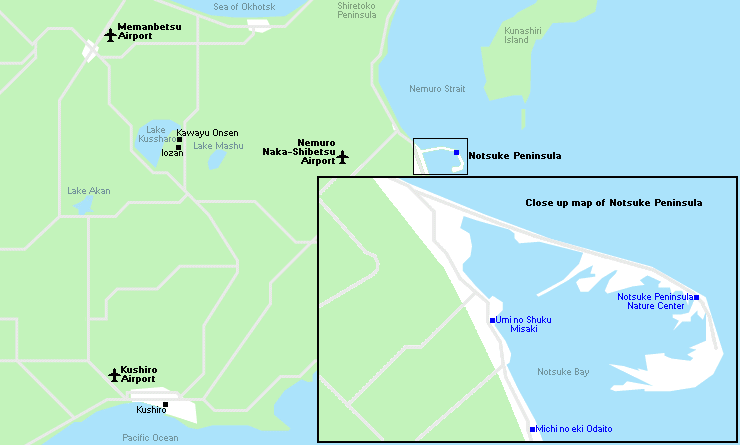
Studies have shown that the peninsula is sinking at a rate of about 1.5 centimeters a year due to the rising sea levels and sand deposits being swept away, all these thanks to global warming. So best to visit the unique peninsula before it disappears, though hopefully it will still remain for many more years.
Aside from wildlife and walking in the great outdoors, there is not much else to sightsee on the peninsula itself. There are a handful of basic accommodation, but most people who visit the peninsula arrive on bus tours and stay for only an hour or less. Instead of doing a quick tour, I decided to travel slow and made it a two day trip with an overnight stay in the town not far from the Notsuke Peninsula.
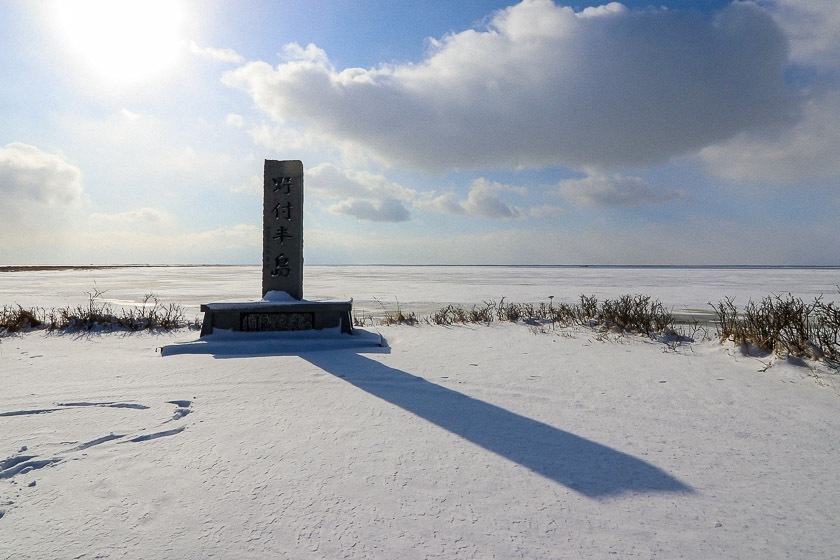
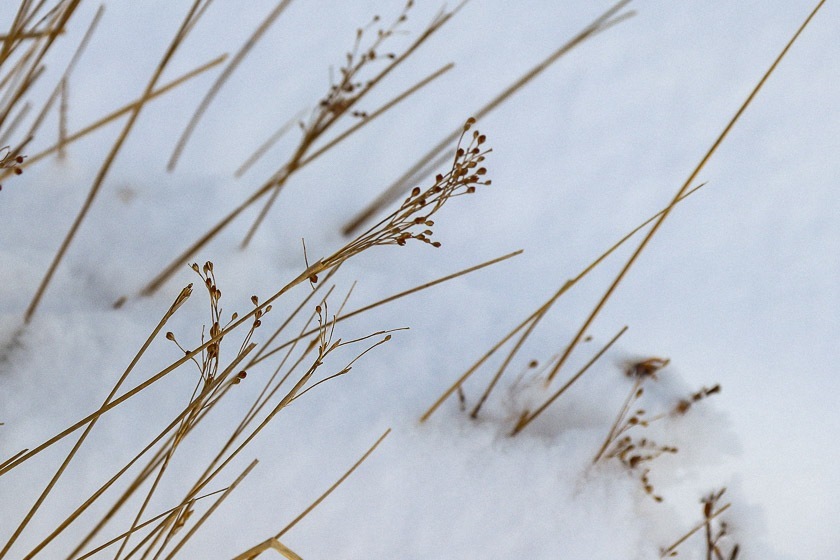
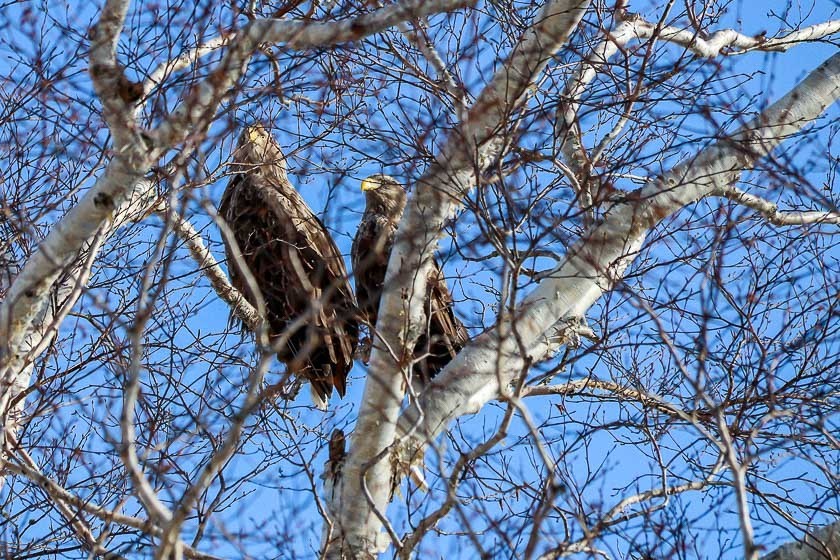
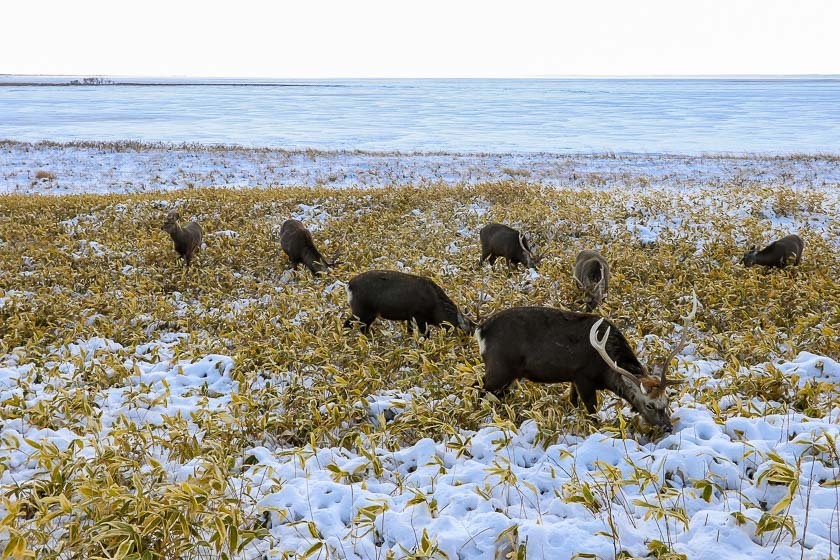
My flight from Tokyo to Nemuro Naka-Shibetsu Airport, the closest airport to Notsuke Peninsula, took under two hours. It was snowing pretty heavily when I arrived, and I jumped headfirst into the winter wonderland. I used a rental car to travel around as direct public transportation to the peninsula is virtually inexistent.
Instead of making straight for the peninsula right off the plane, I headed first to Odaito, a little fishing town on the mainland across from Notsuke Peninsula. I had made plans to stay the night in Odaito and leave the best for the next day. It was a 30-40 minute drive from the airport, and I could still make out bits of the peninsula as visibility grew worse in the heavy snowfall and setting sun. In the winter, the fishing town becomes a sleepy town, and there was not much action happening. However, the amazing seafood I had at my accommodation provided a small sample of the fresh and bountiful catch in the nearby waters.
I stayed at Umi no shuku Misaki, a local, family-run minshuku accommodation by the sea. As it turned out, I was the only guest that evening and had the entire place to myself. While the facilities were simple, it was more than enough for an overnight stay. The proprietress of the minshuku was extremely friendly, and we got to chatting during dinner. All the dishes were made in-house, and the ingredients were all locally sourced. The delicious meal made me a very happy girl with a full belly.

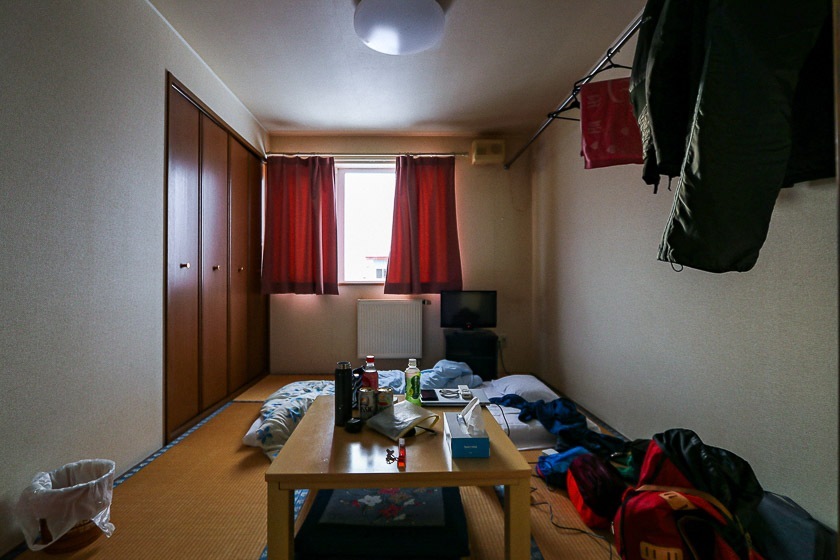
Breakfast the next day was yet another stellar meal, and I was served ochazuke that had a huge cut of salted local salmon atop. This was easily one of the best breakfasts I've had in the last year or so. It was a hearty dish that looked deceptively simple to make, but I'm sure there is a secret technique somewhere.
With my power and warmth levels fully charged, I headed out and made my way for the Notsuke Peninsula. The drive from Odaito, where I was, to Notsuke Peninsula Nature Center took about 30 minutes, and there is only one road that leads to and on the peninsula. The nature center is the main stop for almost all tourists who visit, and almost all the walking routes in the area start from there.
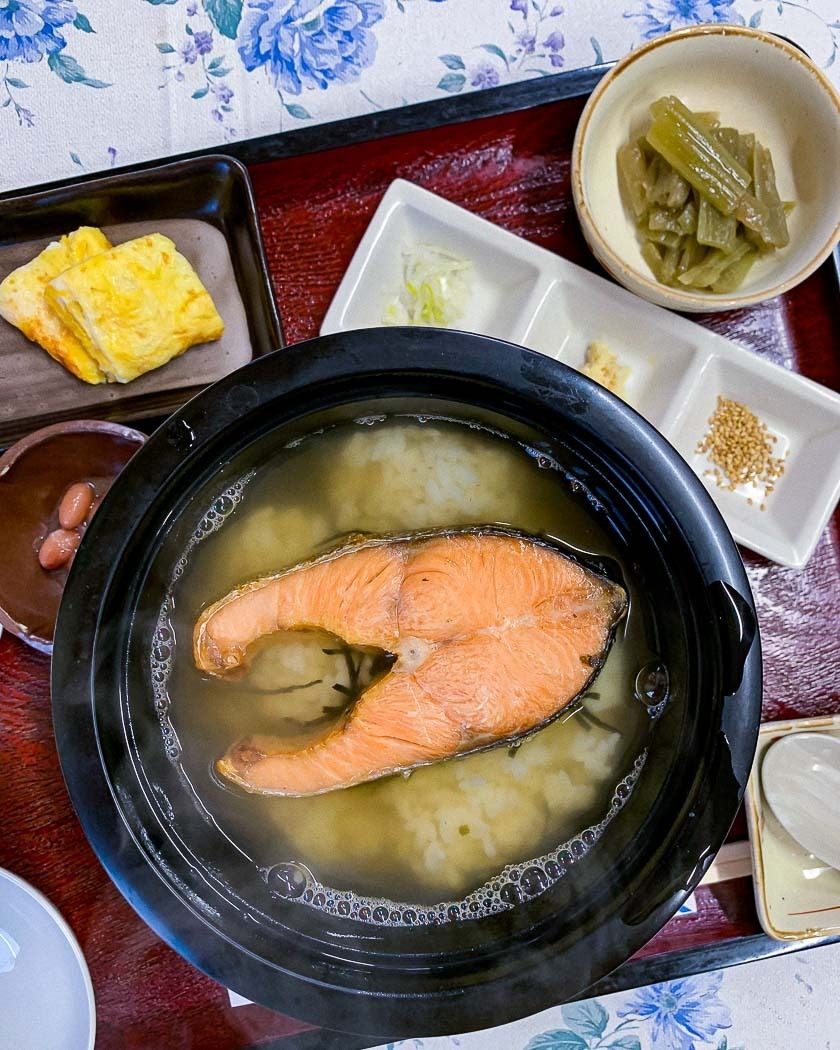
In winter, snow shoe walks on Notsuke Bay are offered at the nature center. Reservations for the tours are required and can be made by calling the Notsuke Peninsula Nature Center at least three days in advance. I made my reservation a few days before and turned up at the scheduled time to meet my guide. Going on a guided tour was the perfect choice for me as not only could my guide speak English, she also explained the rich history and environment of the peninsula. It was an experience that was both educational and fun!
Parts of the shallow Notsuke Bay get frozen in the winter, which makes it possible to walk on it. My guide and I made our way across the frozen bay towards the withered tree grove and looped back to the nature center. Along the way, the winterscape was quite amazing and reminded me of the Uyuni salt flat in Bolivia. Our entire walk took about 1.5 hours, and it was a good chance to see the bay.
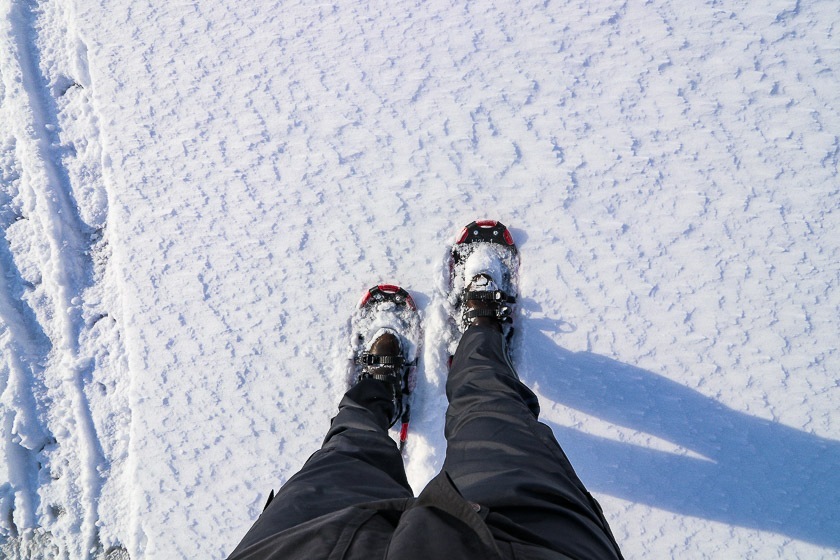
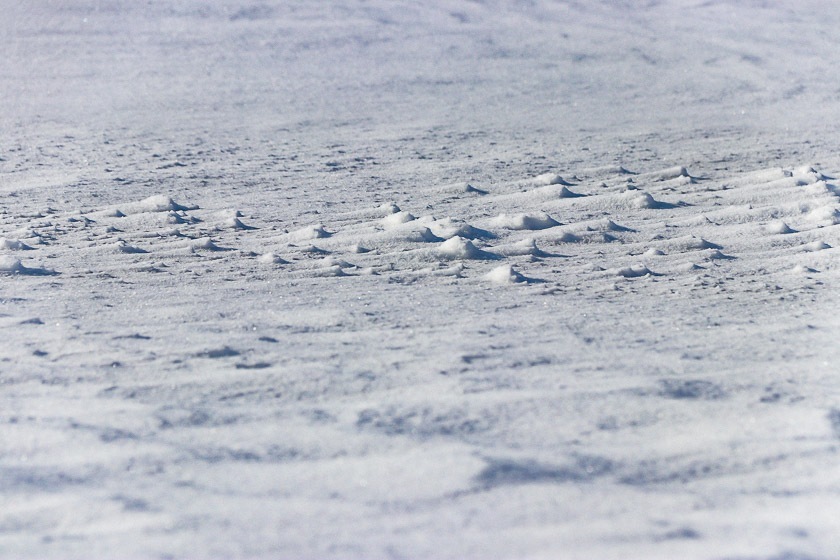
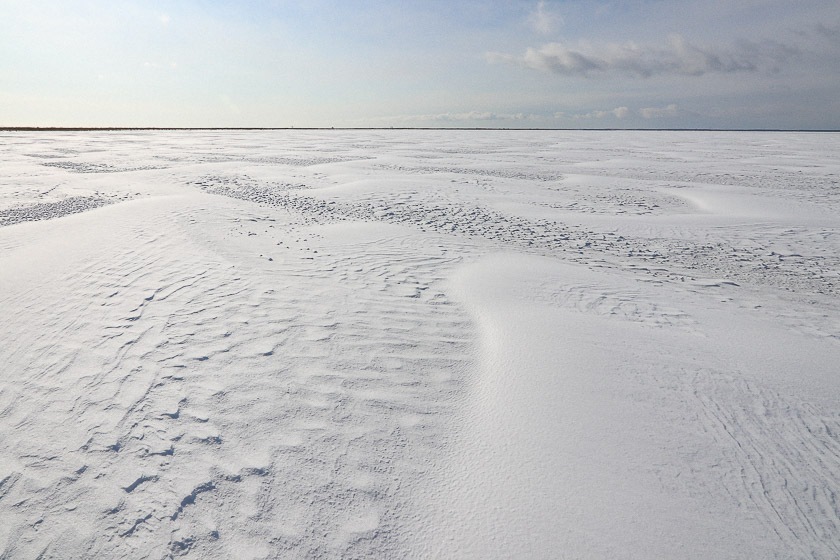
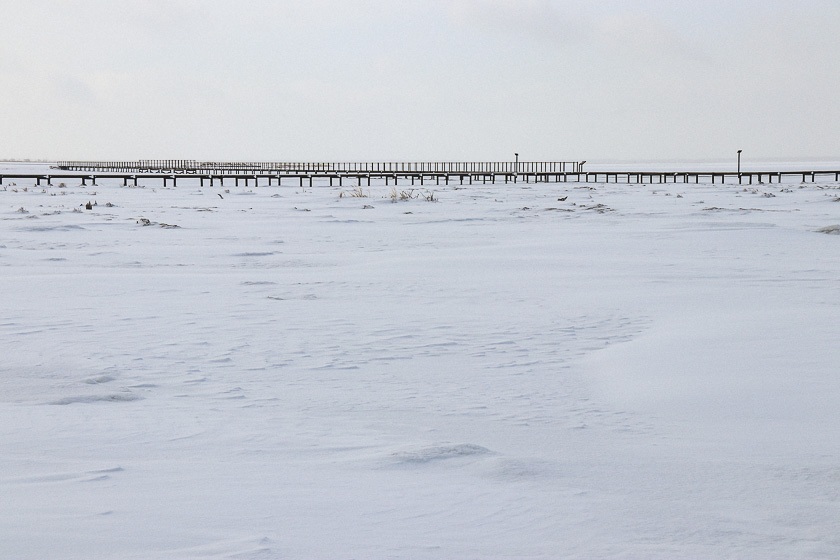
We walked right up to the withered tree grove, and my guide pointed out that not just 50 years ago, there was a rich forest filled with 100-year-old pine and fir trees. It was sobering to see remaining withered trees and see the destructive effect of climate change in just a few decades.
As we looped back towards the nature center, we saw the Amamo seagrass poking out from under the snow. This sea grass is the natural habitat of the Hokkai Shrimp, a local delicacy which is caught in spring and autumn. It was one of the dishes in my dinner the night before! My guide, and the minshuku proprietress the night before, also told me about the local Komai fish, which can be fished in the deeper parts of the bay. And yes, I had that delicious winter fish at dinner too :P
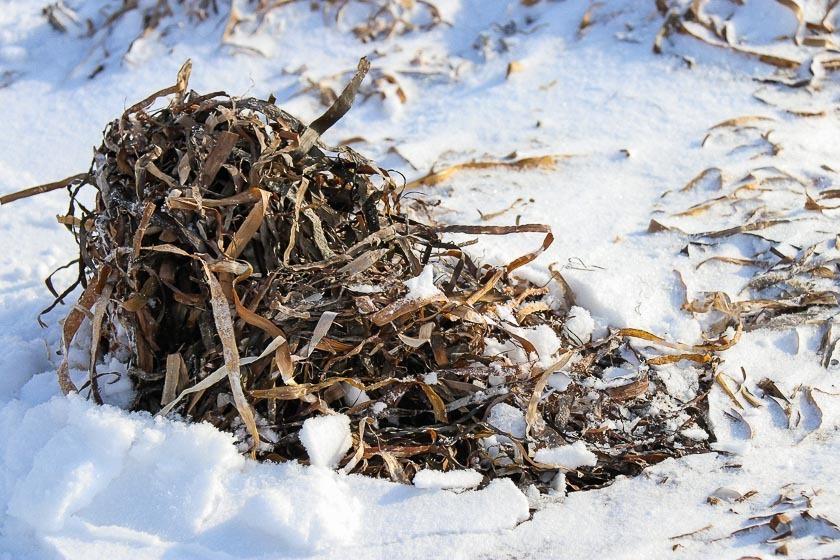
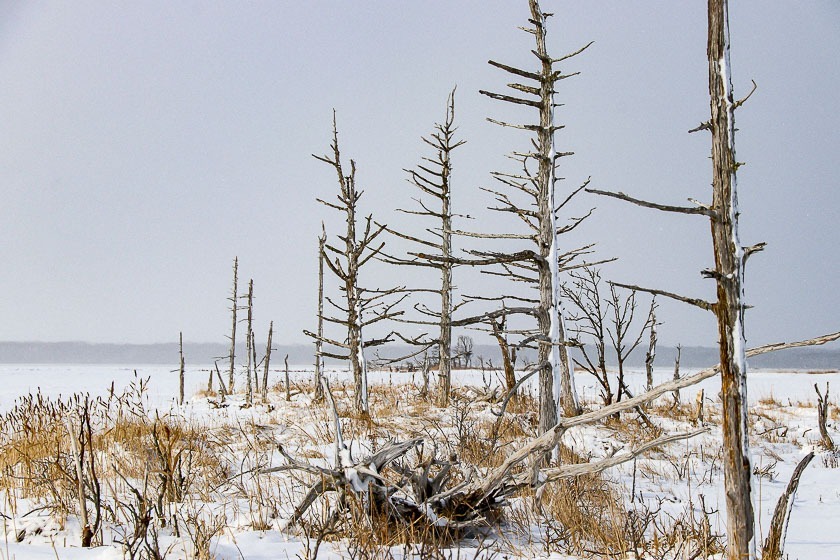
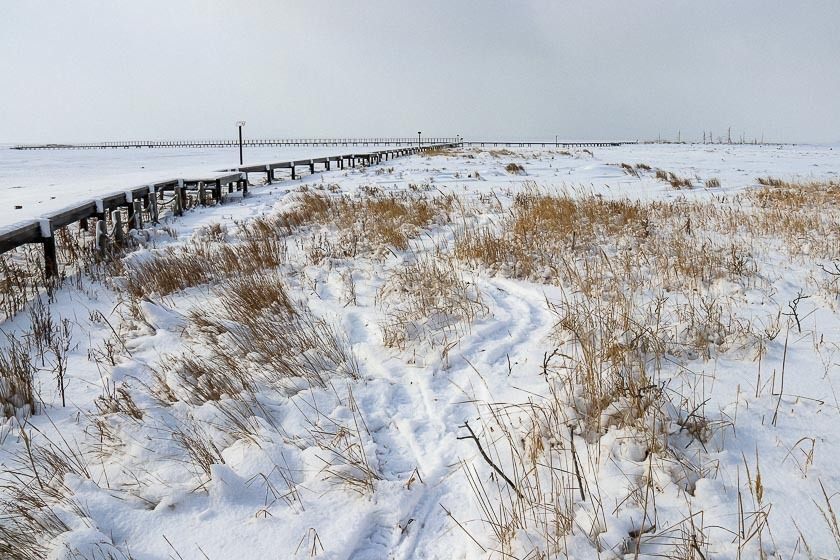
In addition to the scenery, one of the highlights for me was seeing the wild animals that roam the peninsula. I saw two foxes playing in the snow, and a herd of deer feeding on the sasa bamboo leaves. My guide informed me that animals would come to the peninsula in search for food as the snowfall was low compared to farther inland.
Upon return to the nature center, I took a quick look at the nearby areas as I could not go much farther beyond the nature center. In the warmer months from May to October, visitors can go on walks farther into the marshland to see the flowers, and there are also scheduled boat tours from the mainland across the bay to the edge of the peninsula.
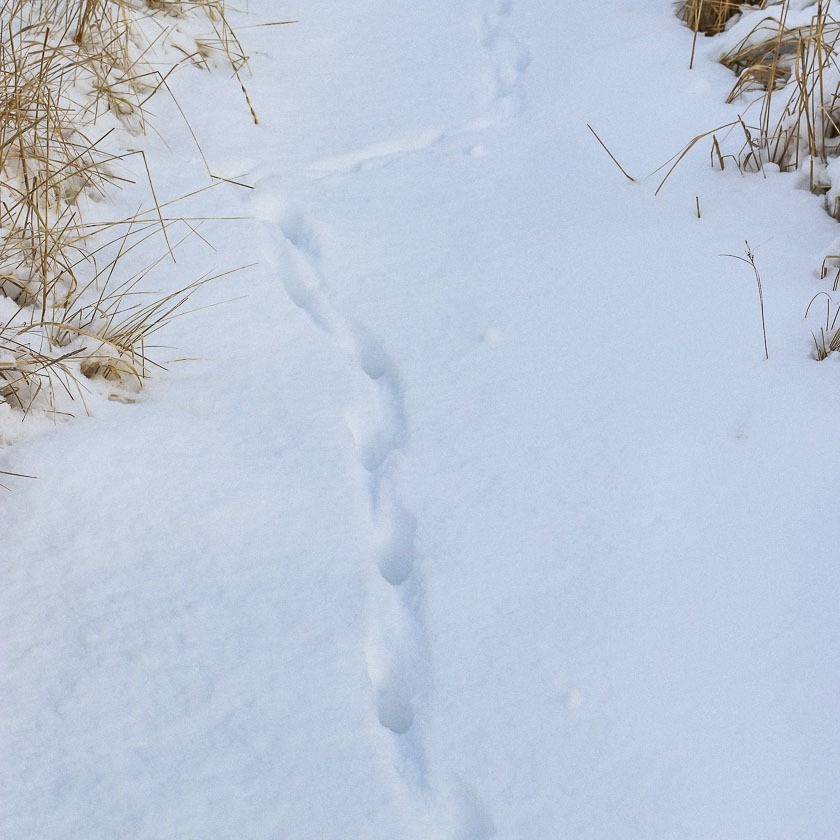
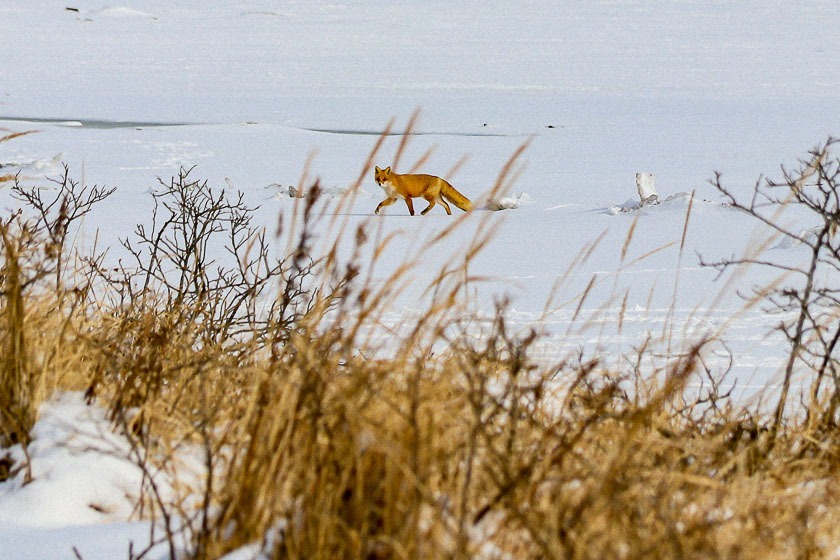
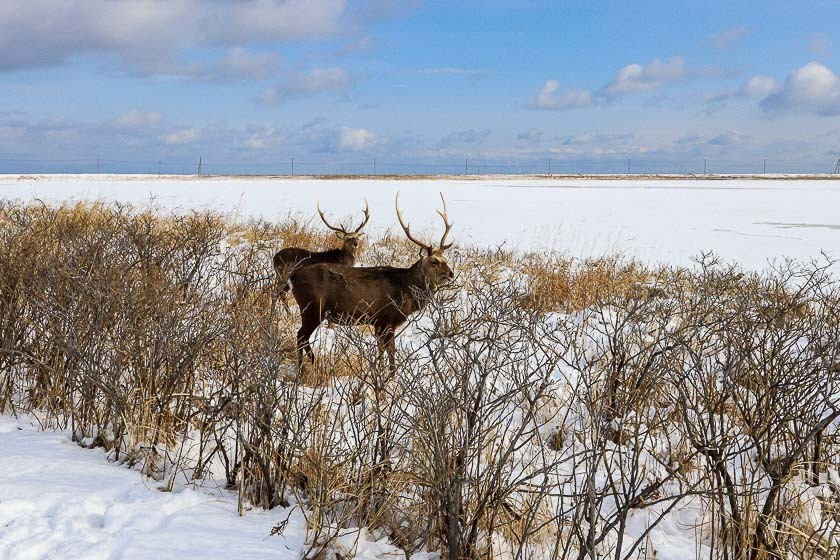
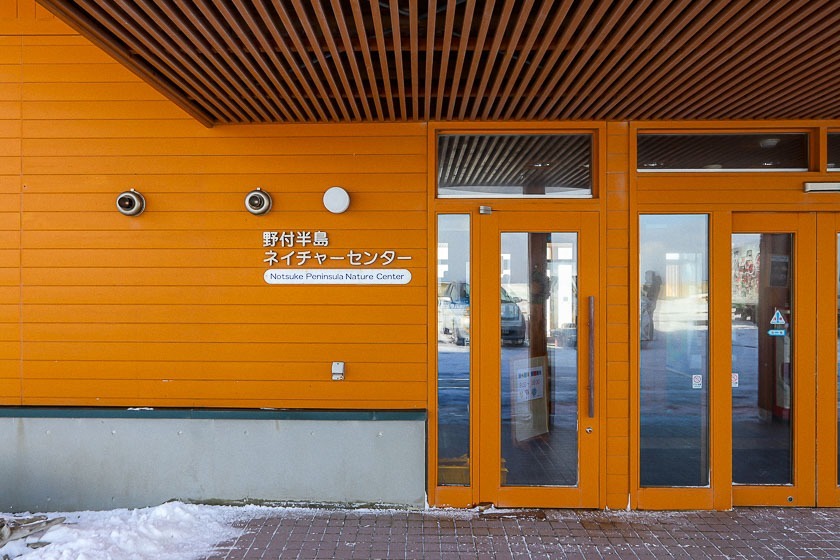

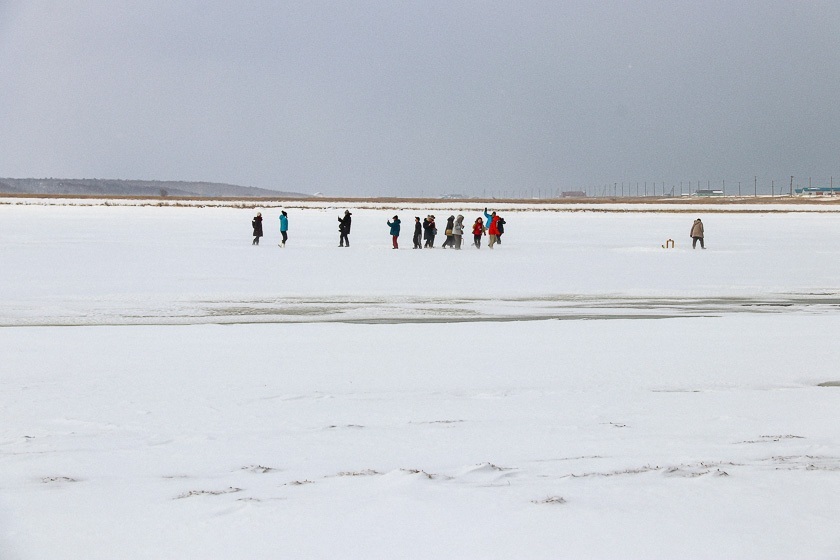
Finally, to cap my visit to the Notsuke Peninsula, I returned back to the mainland and made my way to the rest stop, Michinoeki Odaito. The rest stop was about a 10 minute drive past the previous night's accommodation, and offers a view of the peninsula.
Of interest to me was the bronze sculpture outside of the michinoeki. I found out that the figures were pointing towards Kunashiri Island, which is currently under Russian control, and crying for the return of their separated family members. Additionally, it is only 16 kilometers between Notsuke Peninsula and Kunashiri Island, a distance that is equivalent to the one from the start of the peninsula to the nature center.
With that, my slow trip to the Notsuke Peninsula came to an end. I cannot recommend the quiet peninsula enough to those interested in seeing wildlife. The nearby accommodation, while basic, provided some of the best seafood ingredients I had eaten. It sure made me want to go back in the warmer months!
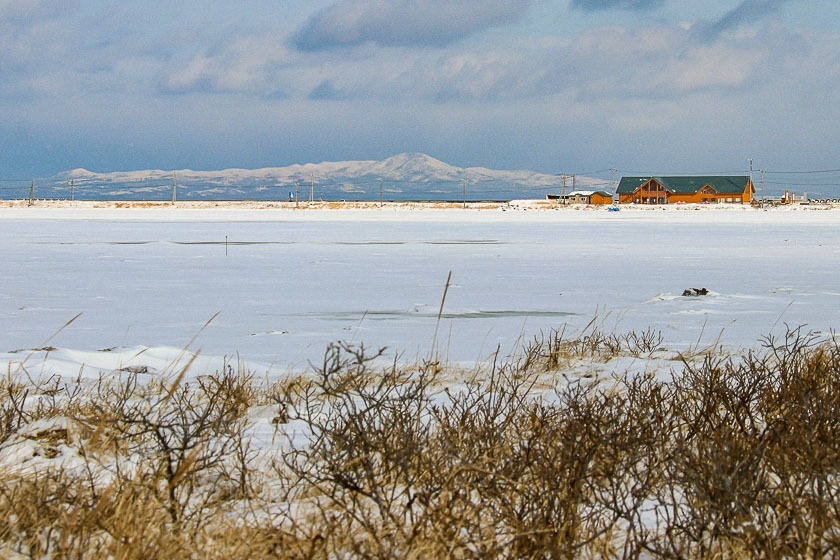
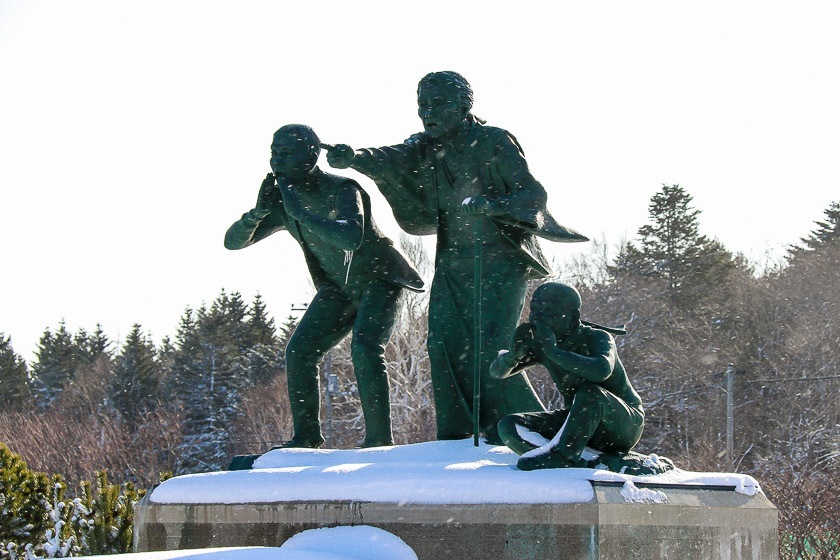

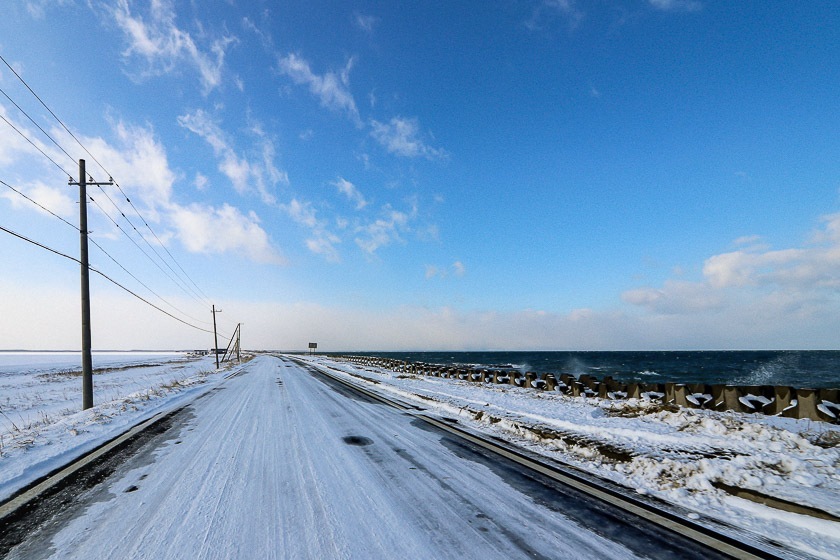
Getting There and Around
Nemuro Naka-Shibetsu Airport is the nearest airport to the Notsuke Peninsula. ANA operates three daily flights between Sapporo's New Chitose Airport and one daily flight between Tokyo's Haneda Airport and Nemuro Naka-Shibetsu Airport. The one way flight from Sapporo starts from 14,000 yen and takes around 50 minutes, while from Tokyo, it starts from 15,000 yen and takes around 100 minutes.
Rental car is the only way to explore the peninsula as public transport is virtually nonexistent. Rental car outlets are available at Nemuro Naka-Shibetsu Airport, and driving from there to the Notsuke Peninsula Nature Center takes about 45 minutes.


